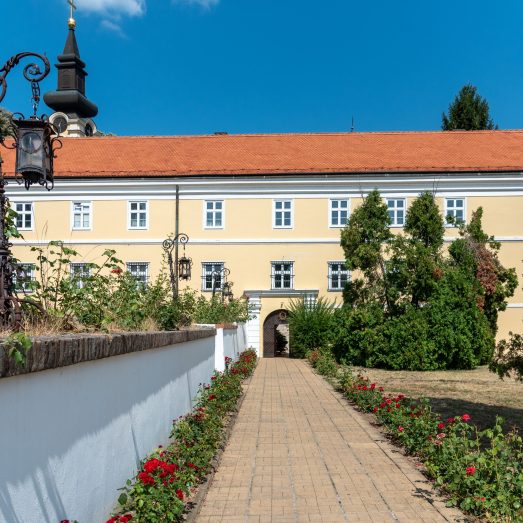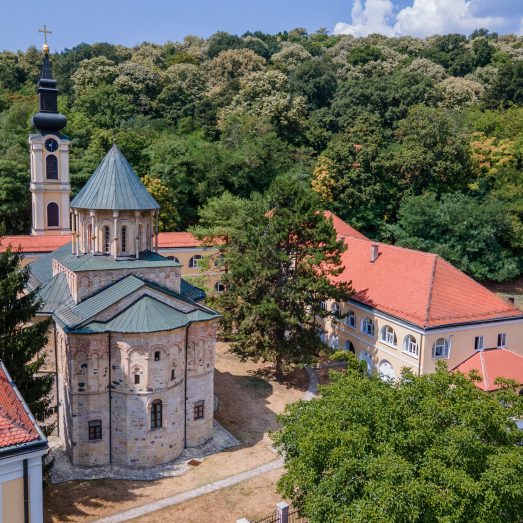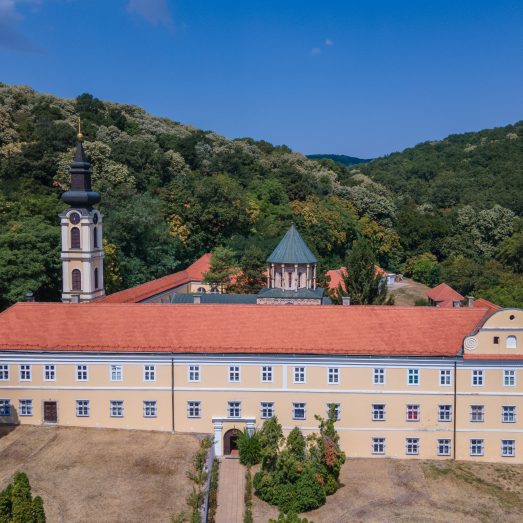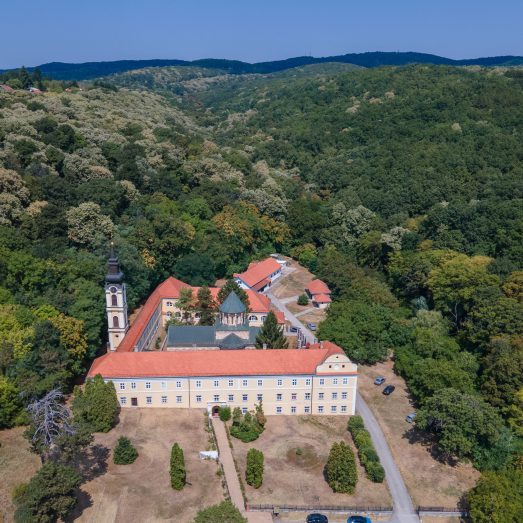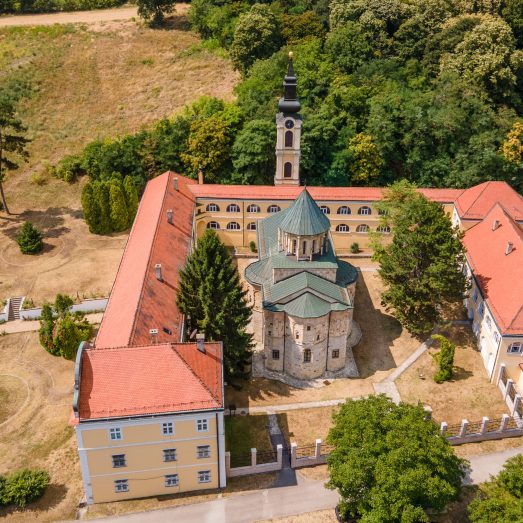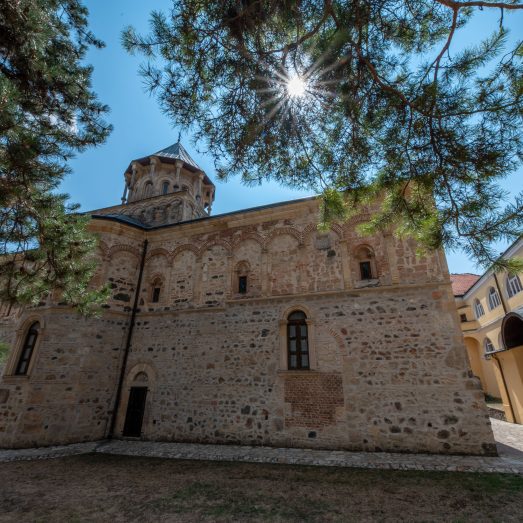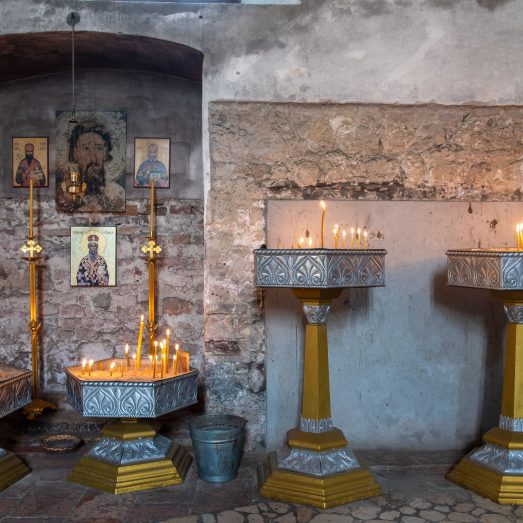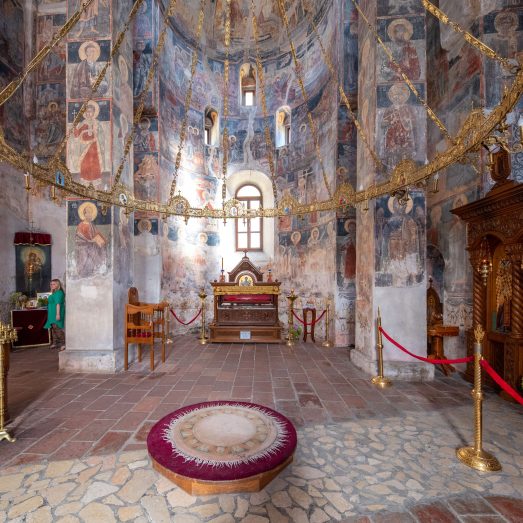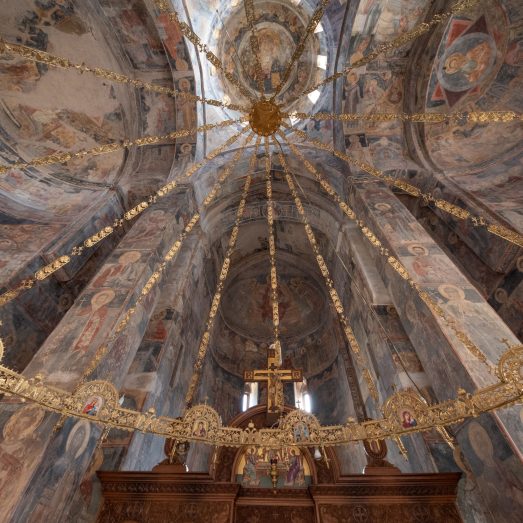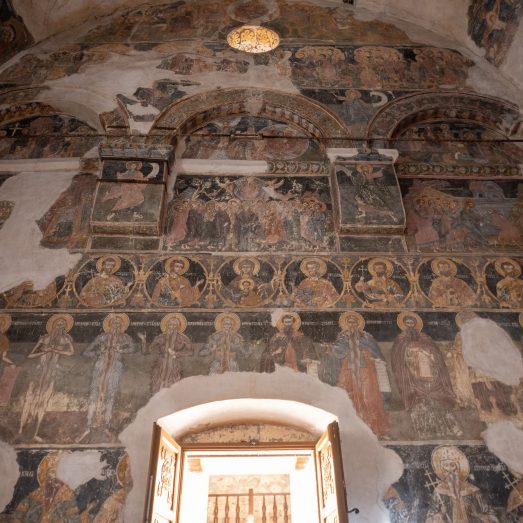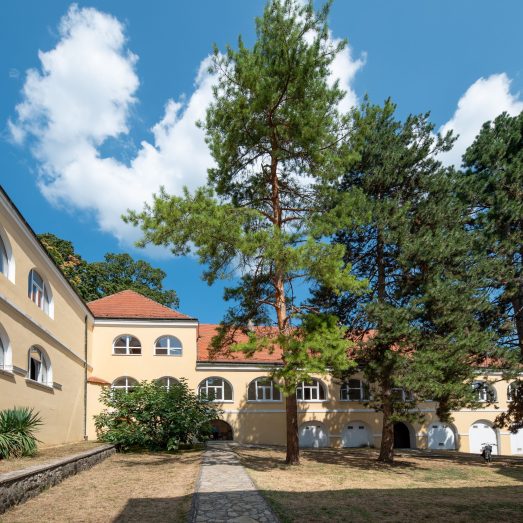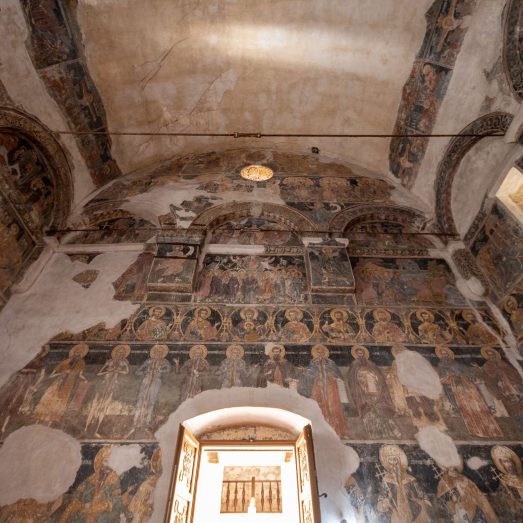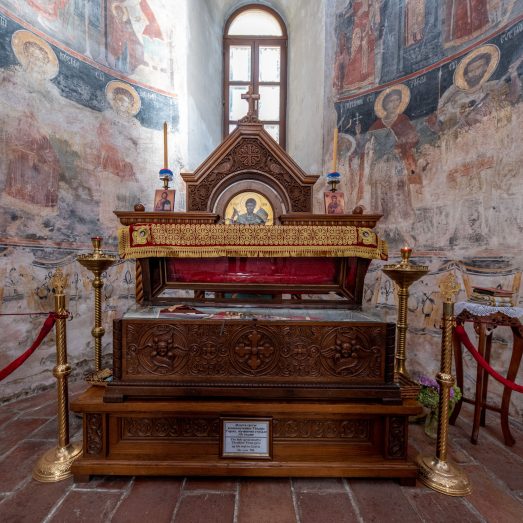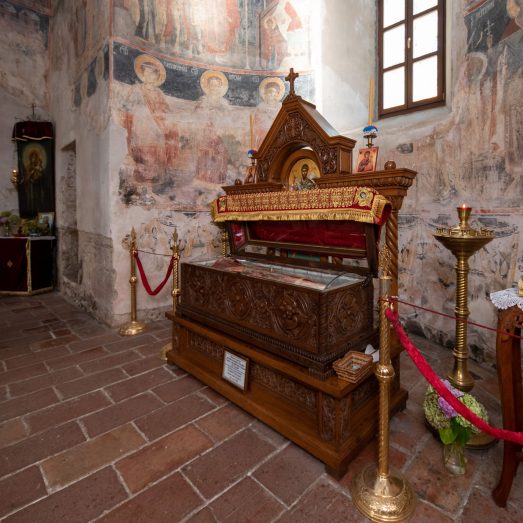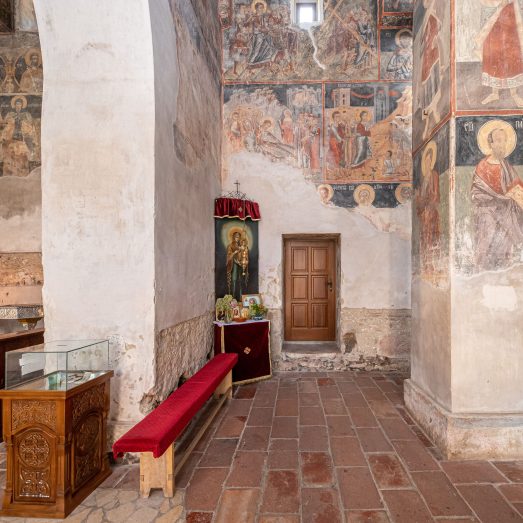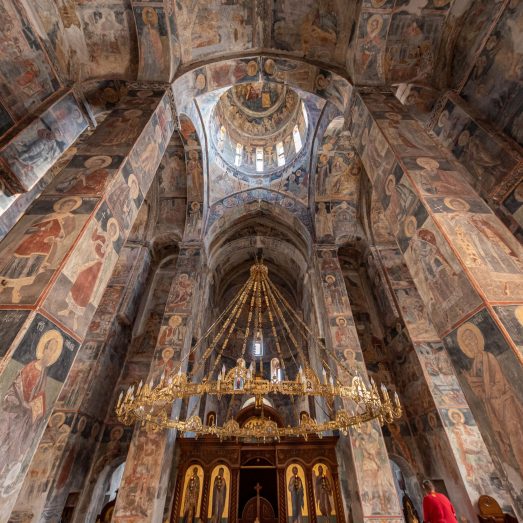The monastery church is dedicated to St. Nicholas (Sv. Nikola) (December 19)
According to the biography (žitije) of St. Angelina (Branković), the Novo Hopovo Monastery is the first endowment of Archbishop and Metropolitan of Belgrade and Srem Maksim (formerly Despot Đorđe) Branković. In historical sources, the monastery was first mentioned in a manuscript menologium written in Novo Hopovo and in Turkish documents from the middle of the 16th century. New research places its origins in the last decade of the 15th century, and the construction of the original church is associated with despot Đorđe Branković and indicates the help he had for this plan from the Vlach rulers Radul and Jovan Njagoje Besarab.
The inscription carved in stone above the western entrance to the modern temple testifies that the patrons of the church (erected in the spot of an older one in the second half of the 16th century), Lacko and Marko Jovšić, and the family of Jovan Božanić, are all from Upper Kovin (Ráckeve). During the 17th century, the monastery was an important educational center, and for a time the seat of the Bishop of Srem. During the wars between Austria and the Ottoman Empire, at the end of the 17th and the beginning of the 18th century, Novo Hopovo was destroyed. The reconstruction and construction of the monastery complex lasted until the second half of the 18th century. The bell tower with the chapel of St. Archdeacon Stefan (Sv. arhiđakon Stefan) was erected in the middle of the 18th century, while the konaks were erected over a longer period of time in the same century.
According to applied eclecticism in architecture, the church of Novo Hopovo is considered one of the most representative ones in the time in which it was created. Art historians believe that this is similar to the Moravian style of construction, but the twelve-sided dome, whose base is a square tholobate, testifies to the unique solution of new builders.
Novo Hopovo was demolished several times, and the most severe destruction occurred during Second World War. The monastery was looted, burned and blown up. The treasury and library, which contained rare and valuable books, were destroyed. Works on the renovation and construction of the monastery complex, started in the 1950s, lasted for several decades. During this process, the Church of St. Nicholas’s (Crkva Sv. Nikole) appearance from the 16th and 17th centuries was restored, and at the end of the 20th century a new bell tower was erected and the chapel of St. Archdeacon Stefan (Sv. arhiđakon Stefan) was consecrated in the konak.
During the 17th century, the monastery church was painted on two occasions, and according to the applied solutions and the manner of painting, it is assumed that the artists were from the south of the Balkans both times. Today, the fresco painting of Novo Hopovo is considered an extremely important example of ecclesiastical, Serbian late medieval art with a clear application of Cretan and Athonite solutions. The older fresco “The Massacre of Children in Bethlehem”(“Pokolj dece u Vitlejemu”) stands out for its importance, and it is considered to be a repeated solution applied in the Lavra Monastery on Mount Athos. The younger fresco in the narthex, unique in its standing figures, was probably gilded as well.
In the 18th century, the monastery also operated a painting school run by zoographers Arsenije and Nil, who are assumed to have painted an iconostasis from the beginning of the 18th century. The iconostasis of the church, painted in the second half of the 18th century by Teodor Dimitrijević Kračun, was destroyed during the Second World War. The preserved icons are in the Gallery of Matica Srpska and the Treasury of the Serbian Orthodox Church in Sremski Karlovci. Contemporary one is the work of 20th century nuns from Žiča. Iconostasis in the chapel of St. Stefan (kapela Sv. Stefana) was painted in the konak by Katarina Vuletić Svinarčuk.
Since the 16th century, Novo Hopovo has been the center of pilgrimage because the relic of St. Theodore of Tiron, killed in the 4th century, was brought to the monastery then. The relic of this holy warrior was brought to the monastery at a time of great trials for the Serbian people, and faith in his protection was a strong incentive for believers in all tribulations throughout the centuries and today. During the destruction of the monastery complex in Second World War, the relics of the saint were saved and in a new reliquary, made in the 20th century, laid in the monastery Church of St. Nicholas (Crkva Sv. Nikole). In the monastery, in addition to the patron saint day dedicated to St. Nicholas, St. Theodore Tiron is celebrated (March 2), Translation of the relics of St. Archdeacon Stefan (Prenos moštiju Sv. arhiđakona Stefana) (August 15) and Theodore’s Sabbath (Teodorova subota) (the first Sabbath of Easter fasting).
The Serbian educator Dositej Obradović (1739-1811) became a monk in Novo Hopovo and spent three years there. The history of Novo Hopovo records the arrival of Russian women, nuns who found refuge there after the October Revolution, and who between the two world wars significantly contributed to its preservation and the reputation it had among the people as a religious center.
Schedule of liturgies: every day at 6.40 a.m., on Sundays and holidays at 9.00 a.m..
TOURIST INFORMATION: Throughout the year, the monastery is open until 5:00 p.m. Decent dress is implied.
